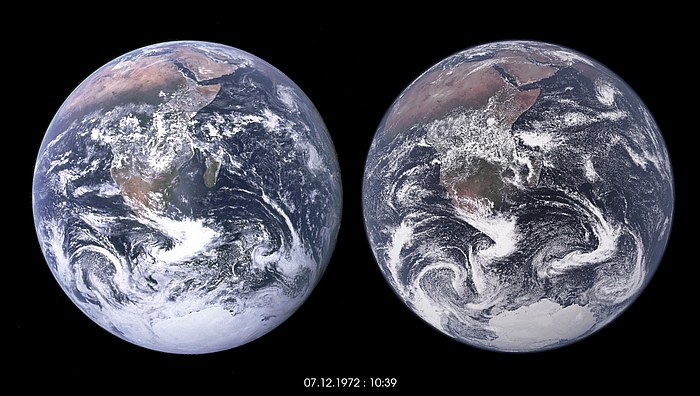07.12.2022
It changed the people’s view of the world and sparked a growing global awareness of issues of peace, solidarity, sustainability and environmental protection. It is hard to overstate the importance of the Blue Marble, which Wikipedia describes as “one of the most reproduced images in history.”
To celebrate the 50th anniversary of this photo, a team from the Max Planck Institute of Meteorology, DKRZ and NVIDIA simulated the actual weather of that date and the following two days using the ICON weather and climate model on DKRZ’s new supercomputer Levante.
The ICON model was run at a resolution of 1 km with 90 vertical levels in the atmosphere (approximately 340 million grid points per level) and 128 vertical levels in the ocean (approximately 240 million surface grid points). A time step of 8s was used for the atmosphere and 45s for the ocean. For the simulation, 900 nodes were used, about one-third of the total supercomputer. About one day was required for the simulation of 3 days. The data was visualized in NVIDIA Omniverse and rendered using the RTX pathtracer.
The visualization shows how far climate modelling has advanced during the last decades, and how far we could come if we work together to use all the tools at our disposal to better understand Earth’s changing climate.
Read the detailed article on Blue Marble on the website of the Max Planck Institute of Meteorology: here
Video "Apollo 17 Blue Marble simulated with the ICON climate model at 1 km resolution" on DKRZ's YouTube channel: here
Original NASA Blue Marble photo (left), visualization (right; copyright: MPI-M, DKRZ, NVIDIA).
The team that led this specific effort to recreate the virtual Blue Marble consisted of Hendryk Bockelmann (DKRZ), Niklas Röber (NVIDIA), Helmuth Haak, Daniel Klocke, René Redler and Bjorn Stevens (MPI-M). Support from European and German national projects NextGEMS, WarmWorld and ESIWACE is greatfully acknowledged.

